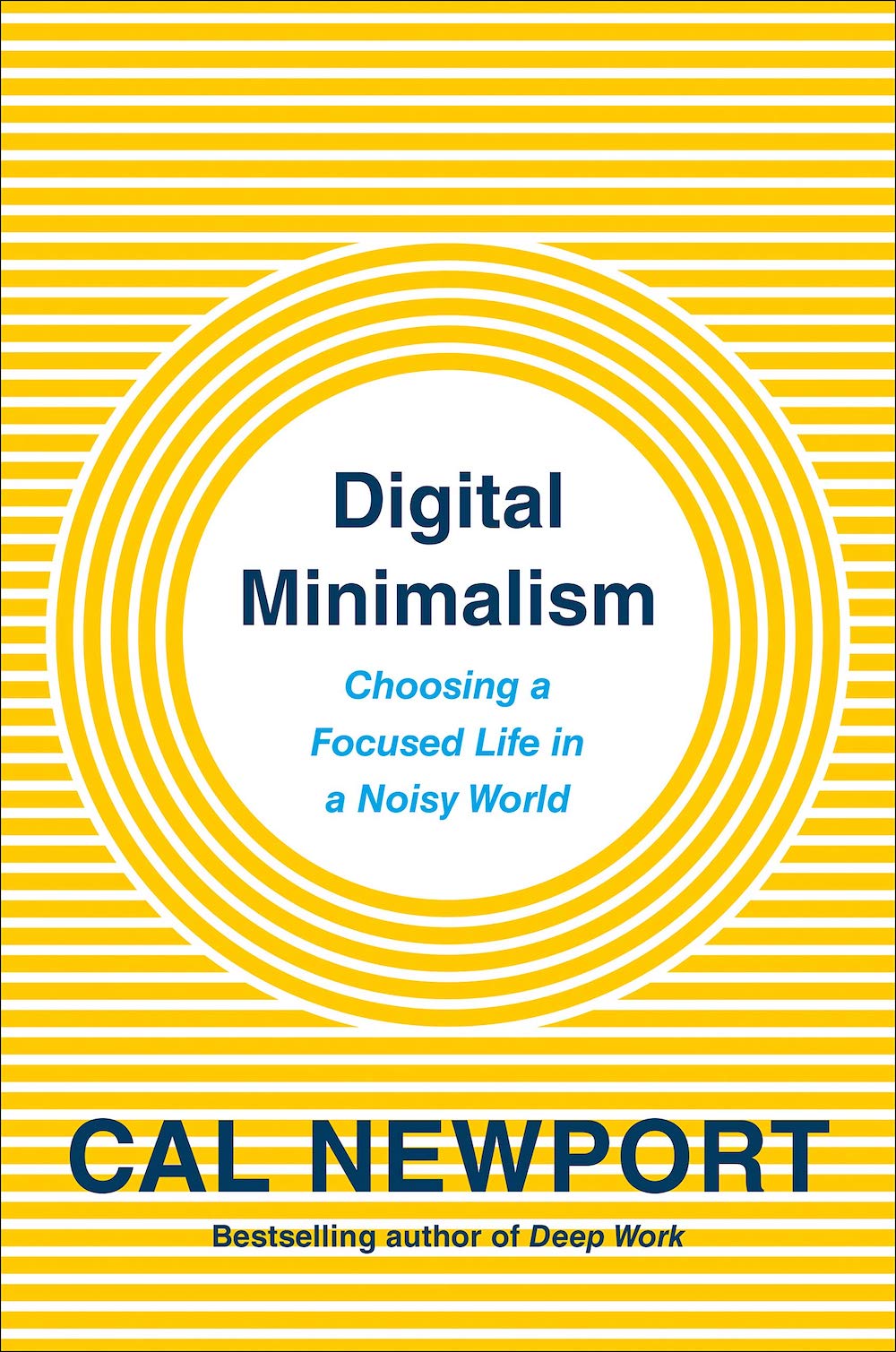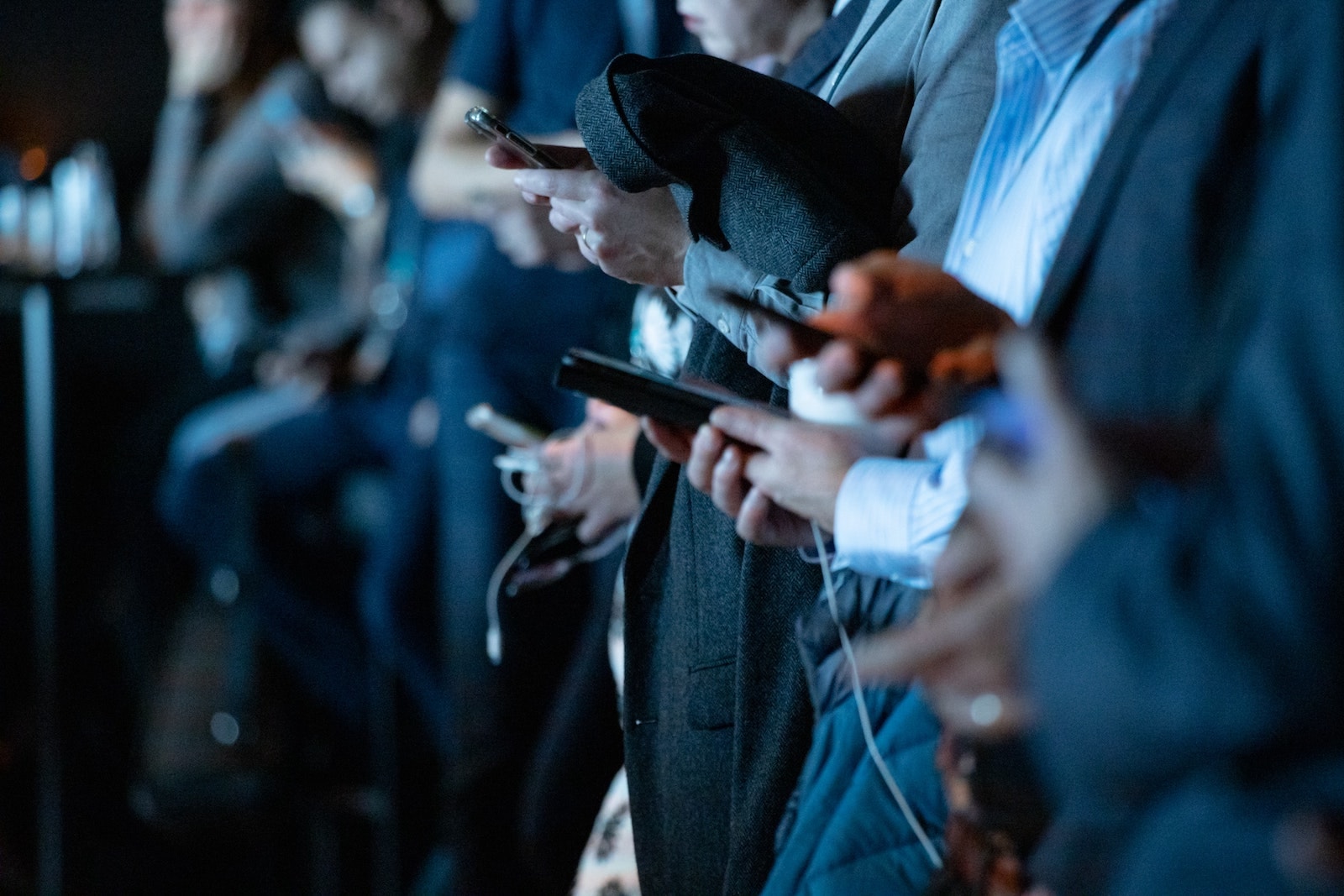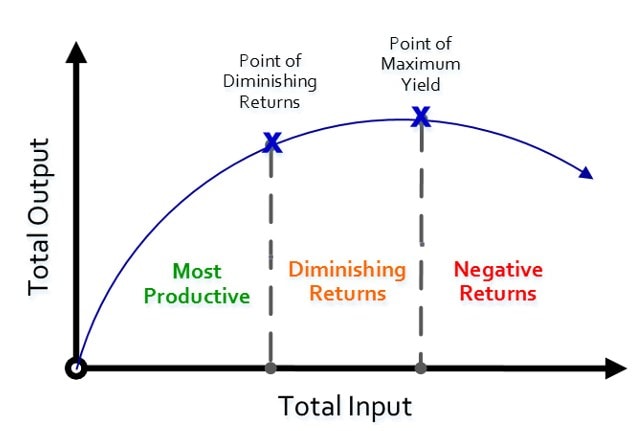Digital Minimalism - Book Notes
I recently finished reading “Digital Minimalism: Choosing a Focused Life in a Noisy World” book by Cal Newport. I liked it and found many useful ideas in it especially in the current time where technology has reached unprecedented degrees of proliferation in our lives. Here, I will share what I liked most in this book.

Book page on Goodreads: Digital Minimalism.
The Problems with Modern Technology

The irresistible attraction to screens is leading people to feel as though they’re ceding more and more of their autonomy when it comes to deciding how they direct their attention.
They downloaded the apps and set up accounts for good reasons, only to discover that these services were beginning to undermine the very values that made them appealing in the first place: they joined Facebook to stay in touch with friends across the country, and then ended up unable to maintain an uninterrupted conversation with the friend sitting across the table.
What’s making us uncomfortable is this feeling of losing control—a feeling that instantiates itself in a dozen different ways each day, such as when we tune out with our phone during our child’s bath time, or lose our ability to enjoy a nice moment without a frantic urge to document it for a virtual audience.
The urge to check Twitter or refresh Reddit becomes a nervous twitch that shatters uninterrupted time into shards too small to support the presence necessary for an intentional life.
In an open marketplace for attention, darker emotions attract more eyeballs than positive and constructive thoughts. For heavy internet users, repeated interaction with this darkness can become a source of draining negativity.
Many of the apps and sites that keep people compulsively checking their smartphones and opening browser tabs often leverage two hooks to make themselves nearly impossible to resist: intermittent positive reinforcement and the drive for social approval. Rewards delivered unpredictably are far more enticing than those delivered with a known pattern. Something about unpredictability releases more dopamine. You can describe users as “gambling” every time they post something on a social media platform: Will you get likes (or hearts or retweets), or will it languish with no feedback?
The hot new technologies that emerged in the past decade or so are particularly well suited to foster behavioral addictions, leading people to use them much more than they think is useful or healthy. Indeed, as revealed by whistleblowers and researchers like Tristan Harris, Sean Parker, Leah Pearlman, and Adam Alter, these technologies are in many cases specifically designed to trigger this addictive behavior. Compulsive use, in this context, is not the result of a character flaw, but instead the realization of a massively profitable business plan.
The Solution: Digital Minimalism

Digital Minimalism is a philosophy of technology use in which you focus your online time on a small number of carefully selected and optimized activities that strongly support things you value, and then happily miss out on everything else.
The law of diminishing returns is familiar to anyone who studies economics. It applies to the improvement of production processes and says, at a high level, that investing more resources into a process cannot indefinitely improve its output—eventually you’ll approach a natural limit and start experiencing less and less extra benefit from continued investment.
Most people invest very little energy into optimizing their digital lives. To use the appropriate economic terminology, most people’s personal technology processes currently exist on the early part of the return curve—the location where additional attempts to optimize will yield massive improvements. It’s this reality that leads digital minimalists to focus not just on what technologies they adopt, but also on how they use them.
The Digital Declutter Process
For thirty days, you’re supposed to take a break from “optional technologies” in your life. The first step of the declutter process, therefore, is to define which technologies fall into this “optional” category.
When I say technology in this context, I mean the general class of things we’ve been calling “new technologies” throughout this book, which include apps, websites, and related digital tools that are delivered through a computer screen or a mobile phone.
To allow an optional technology back into your life at the end of the digital declutter, it must:
- Serve something you deeply value
- Be the best way to serve this value
- Have rules that specify when and how you use it
The Importance of Solitude

Before we can usefully discuss solitude, we need to better understand what we mean by this term. To aid us in this effort, we can turn toward Raymond Kethledge and Michael Erwin who wrote a book on the topic of solitude. It took them seven years, but their efforts culminated in the 2017 release of Lead Yourself First.
The authors state a precise definition of solitude. Many people mistakenly associate this term with physical separation—requiring, perhaps, that you hike to a remote cabin miles from another human being. As Kethledge and Erwin explain, however, solitude is about what’s happening in your brain, not the environment around you. Accordingly, they define it to be a subjective state in which your mind is free from input from other minds.
So as long as your mind is left to grapple only with its own thoughts, you are in solitude. On the other hand, solitude can be banished in even the quietest setting if you allow input from other minds to intrude. In addition to direct conversation with another person, these inputs can also take the form of reading a book, listening to a podcast, watching TV, or performing just about any activity that might draw your attention to a smartphone screen.
“All of humanity’s problems stem from man’s inability to sit quietly in a room alone” —Blaise Pascal.
A growing amount of research suggests that the time and space for quiet reflection the cottage enabled may have played a key role in helping Lincoln make sense of the traumas of the Civil War and tackle the hard decisions he faced.
A Canadian social critic named Michael Harris talked about solitude in his 2017 book “Solitude”. Harris is concerned that new technologies help create a culture that undermines time alone with your thoughts, noting that “it matters enormously when that resource is under attack”.
Regular doses of solitude, mixed in with our default mode of sociality, are necessary to flourish as a human being. It’s more urgent now than ever that we recognize this fact, because for the first time in human history solitude is starting to fade away altogether.
Solitude Deprivation
Solitude deprivation is a state in which you spend close to zero time alone with your own thoughts and free from input from other minds.
As recently as the 1990s, solitude deprivation was difficult to achieve. There were just too many situations in everyday life that forced you to be alone with your thoughts, whether you wanted to or not—waiting in line, crammed into a crowded subway car, walking down the street, working on your yard. Today, it’s become widespread.
Solitude Deprivation Consequences
When it comes to constant connectivity, extreme use of technology is readily apparent among young people born after 1995—the first group to enter their preteen years with access to smartphones, tablets, and persistent internet connectivity. If persistent solitude deprivation causes problems, we should see them show up here first.
I was chatting with the head of mental health services at a well-known university where I had been invited to speak. This administrator told me that she had begun seeing major shifts in student mental health. Until recently, the mental health center on campus had seen the same mix of teenage issues that have been common for decades: homesickness, eating disorders, some depression, and the occasional case of OCD.
Then everything changed. Seemingly overnight the number of students seeking mental health counseling massively expanded, and the standard mix of teenage issues was dominated by something that used to be relatively rare: anxiety. When I asked her what she thought caused the change, she answered without hesitation that it probably had something to do with smartphones.
The sudden rise in anxiety-related problems coincided with the first incoming classes of students that were raised on smartphones and social media. She noticed that these new students were constantly and frantically processing and sending messages. It seemed clear that the persistent communication was somehow messing with the students’ brain chemistry.
A few years later, this administrator’s hunch was validated by San Diego State University psychology professor Jean Twenge, who is one of the world’s foremost experts on generational differences in American youth.
As Twenge notes in a September 2017 article for the Atlantic, she has been studying these trends for over twenty-five years, and they almost always appear and grow gradually. But starting around 2012, she noticed a shift in measurements of teenager emotional states that was anything but gradual: Young people born between 1995 and 2012, a group Twenge calls “iGen,” exhibited remarkable differences. One of the biggest and most troubling changes was iGen’s psychological health. “Rates of teen depression and suicide have skyrocketed,” Twenge writes, with much of this seemingly due to a massive increase in anxiety disorders. She notes that these shifts in mental health correspond “exactly” to the moment when American smartphone ownership became ubiquitous.
These teenagers have lost the ability to process and make sense of their emotions, or to reflect on who they are and what really matters, or to build strong relationships, or even to just allow their brains time to power down their critical social circuits, which are not meant to be used constantly.
Consolidate Technology Sessions
Keep your phone in Do Not Disturb mode by default. On both iPhones and Android devices, for example, this mode turns off notifications when text messages arrive. If you’re worried about emergencies, you can easily adjust the settings so calls from a selected list (your spouse, your kid’s school) do come through. You can also set a schedule that turns the phone to this mode automatically during predetermined times.
You can now schedule specific times for texting—consolidated sessions in which you go through the backlog of texts you received since the last check, sending responses as needed and perhaps even having some brief back-and-forth interaction before apologizing that you have to go, turning the phone back to Do Not Disturb mode, and continuing with your day.
I learned a practice that allows you to regularly enjoy rich phone conversations from a technology executive in Silicon Valley who innovated a novel strategy for supporting high-quality interaction with friends and family: he tells them that he’s always available to talk on the phone at 5:30 p.m. on weekdays. There’s no need to schedule a conversation or let him know when you plan to call—just dial him up. As it turns out, 5:30 is when he begins his traffic-clogged commute home in the Bay Area.
I’ve seen several variations of this practice work well like “Coffee shop hours”. In this variation, you pick some time each week during which you settle into a table at your favorite coffee shop with the newspaper or a good book. The reading, however, is just the backup activity. You spread the word among people you know that you’re always at the shop during these hours.
Have a High-quality Leisure Time

Low-quality leisure time is time spent on mindlessly and lazily browsing social media websites for example.
In the professional world, many high achievers are meticulous strategists. They lay out a vision for what they’re trying to accomplish on multiple different time scales, connecting high-level ambition to decisions about daily actions. I’ve both practiced and written about these types of professional strategies for many years.
I suggest you strategize the leisure-time part of your life with a two-level approach consisting of both a seasonal and weekly leisure plan.
Seasonal Leisure Plan
Seasonal leisure plan contains two different types of items: objectives and habits; both be connected to cultivating a high-quality leisure life. Example:
Objective: Learn on the guitar every song from the A-side of Meet the Beatles!
Strategies:
- Restring and retune my guitar, find the chord charts for the songs, print them, and put them in nice plastic protector sheets.
- Return to my old habit of regularly practicing my guitar.
- As incentive, schedule Beatles party in November. Perform songs.
Habit: During the week, restrict low-quality leisure to only sixty minutes a night.
Habit: Read something in bed every night.
Habit: Attend one cultural event per week.
The boundary between habits and objectives is porous. In our above examples, our hypothetical planner might have added “practice guitar twice a week” to her habit list instead of including it in her Beatles-themed objective.
The Weekly Leisure Plan
For each of the objectives in the seasonal plan, figure out what actions you can do during the week to make progress on these objectives, and then, crucially, schedule exactly when you’ll do these things.
Does social media make us more connected?
There is a study authored by a large team from diverse disciplines. It appeared in the prestigious American Journal of Preventive Medicine in July 2017. In this study, Primack and his team surveyed a nationally representative sample of adults between the ages of nineteen and twenty-two. The researchers found that the more someone used social media, the more likely they were to be lonely. “It’s social media, so aren’t people supposed to be socially connected?” But the data was clear. The more time you spend “connecting” on these services, the more isolated you’re likely to become.
